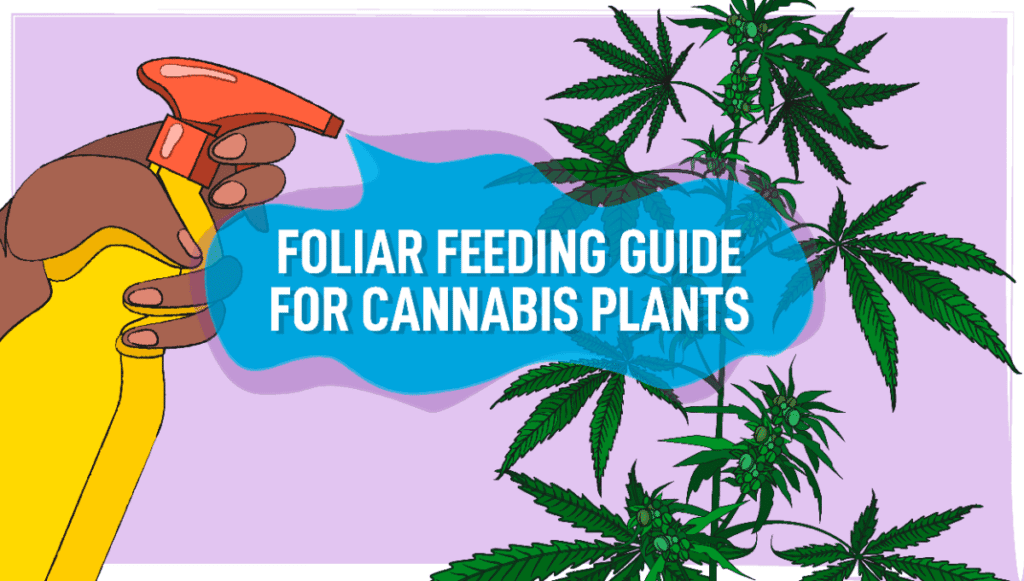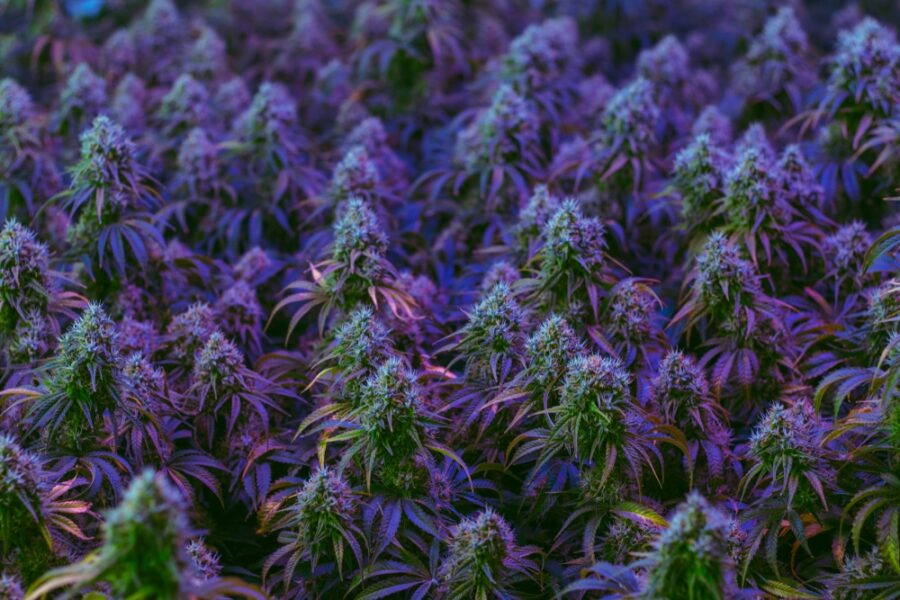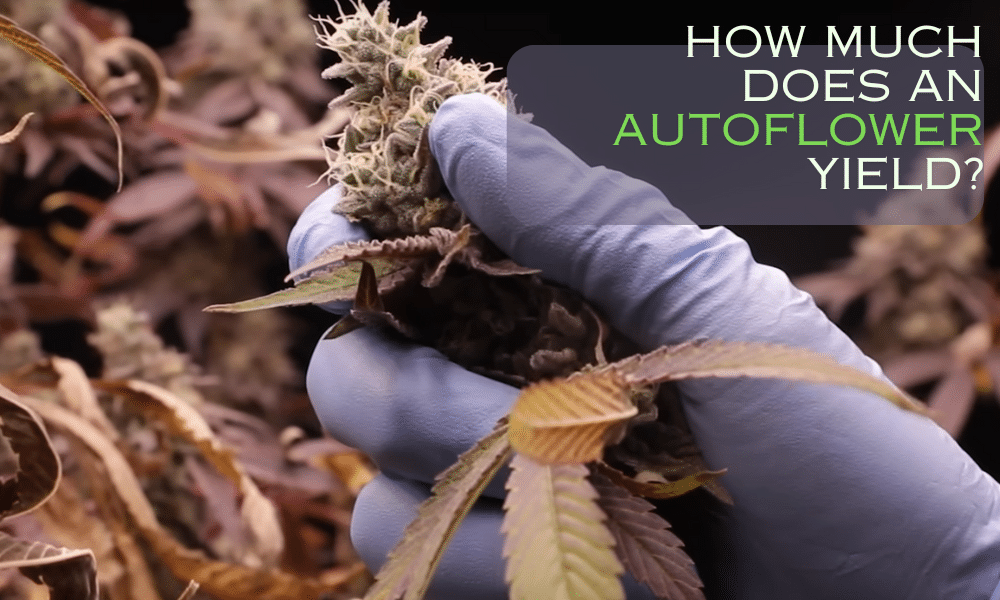No products in the cart.
Marijuana Education
Our Guide On Foliar Spray For Weed | Growing Tips
When it is accurately done, foliar feeding can be super beneficial for cannabis plants. Although this may seem contradictory to the generally accepted school of thought, regular spraying and/or misting is essential to modern cannabis plants. When you spray a mixture of the nutrient solution onto the plant leaves, the cannabis plant absorbs all the nutrients. Our guide will go over on how to foliar spray for weed.
Ultimately, foliar feeding gives your cannabis plants a significant boost. This ensures that you get a much better, bigger, and bountiful bud-filled harvest. Regardless, foliar spraying cannot out rightly replace the normal root-feeding system. Rather, it merely offers a faster route to ensure that your cannabis plant receives the much-needed supplementary nutrients.
Although some weed growers do not use the foliar feeding method, there is a good chance that you may encounter situations when using foliar spray becomes beneficial for your marijuana plants. Also, foliar feeding is easily a multi-functional cultivation technique, since it can be used for nutrient solutions, protective natural solutions treatment for plants, insecticides, and fungicides.
Even though you do not need any specific type of skill or growing ability to use foliar spraying, learning the proper way to go about it can be beneficial in helping you achieve the best results possible. To know more about foliar feeding as well as when to use it, continue reading. To help ensure that you achieve your desired result, it is important to understand what you have to do, the right products to make use of, and the way to do it.
The way foliar feeding process work
As aforementioned, foliar feeding is a process that involves spraying fertilizer directly onto the leaves of the cannabis plant. Before now, the process has enjoyed focus from various scientific and anecdotal studies and this has prompted many growers to try it out in their weed growing regimens.
A regular spraying regimen allows your weed plant to be fed through its stomata, these are microscopic openings that are found in the middle of two guard cells. They ensure that the nutrients reach the plant directly. Also, regular and proper spraying creates a clean and open stoma for your plants. When the water content changes near the secondary and guard cells, it causes the plant stomata to open or shut as it is the basic response when the plant’s water status changes.
Feeding your cannabis plants
The cannabis plant is able to continue the photosynthesis process by mixing different ingredients inside the leaves. Such materials are usually liquid (water), energy (light), and gaseous (carbon dioxide). Simply looking over your plant’s leaves will give you insight into the way it makes food.
The plant’s stomata are necessary for providing output and input routes for the plant’s gaseous exchanges. The stomata basically are similar to tiny pores. It opens to get more CO2 if the plant requires more carbon dioxide levels to complete the photosynthesis process.
There are numerous benefits offered by foliar feeding. A proper understanding of these benefits can help you decide if you want to use this method. Foliar feeding fertilizers typically offer up to three or five times better effectiveness than standard fertilizers which are directly applied to the plant roots.
Also, foliar feeding can help reduce the stress weed plants endure because of subpar nutrition. More so, foliar spray nutrients help your weed plants access more elements like Iron, when such elements are lacking in the soil, water, or hydroponic solution.
Foliar spraying for fungicides and insecticides
Foliar sprays are common and useful for treating cannabis plants for various diseases and plant pests, like mites, powdery mildew, etc. Neem oil is a popular solution used by many growers to treat existing problems and for preventive measures too.
Neem oil is considered to be a very natural insecticide and it offers some fungicidal properties too. Weed growers using neem oil spray can incorporate aloe juice and emulsifiers like potassium silicate, this helps in dissolving the neem oil. Using foliar spray on the plants every week during their vegetative stage will help in strengthening the weed plants and increase the plant’s pests and pathogens resistance.
Foliar sprays created with potassium soap ( otherwise called insecticidal soap) are great for combating insect issues. It is particularly effective against aphid problems and infestation, which happens to be the most common issue of pests for cannabis plants. Dissolving neem oil into the potassium soap is much more beneficial. While the pest is immediately eliminated by potassium soap upon application, the neem oil prevents further attacks and helps strengthen the plant’s defenses.
Other various natural ingredients exist, including plain milk, cinnamon oil, cayenne pepper, and nettle which can all help in fighting or preventing powdery mildew. Also, these substances are natural ways of treating other kinds of pests and fungal pathogens without causing any harm to the plants. A quick search online will provide you with several recipes in which these ingredients can be used.
Eliminate the likelihood of nutrient deficiencies with foliar feeding
A great way to correct nutrient deficiencies is through the use of foliar sprays. This is because absorption through the plant’s leaves occurs quickly. You are guaranteed virtually immediate results. If you’re an outdoor grower, it is best to spray or feed the plants using foliar very early in the morning. For indoor growers, spraying whenever the room is lighted is good.
When the light appears, the stomata of the plant will open. However, the foliar spray won’t be that effective if the environment reaches 80 or more degrees Fahrenheit temperature. This is because most stomata will close.
Also, foliar feeding is beneficial to younger plants, clones, seedlings, and any weed plant in its vegetative phase. This is because clones aren’t rooted, foliar feeding is required to help them start the process of root development and to prevent yellow discoloration, which is ordinarily the common problem faced by cloned cannabis plants.
You should stop foliar feeding when the cannabis plant enters the flowering phase. The plant releases a kind of resin when the atmosphere around it becomes hot and dry for the purposes of insulation. This natural process helps in keeping the marijuana plant cool. It is advised that you tune down the temperature around your plants when making use of foliar feeding at the flowering stage, this will prevent the fertilizer from mixing with the resin produced by the plant.
According to expert recommendations, foliar spraying should only be used during the plant’s vegetative phase until two weeks into its flowering phase approximately. It is important to ensure that your marijuana plants do not possess residual nutrients when harvested. Otherwise, it will result in nutrient-infested, dense smoke.
The foliar feeding and spraying process
Any fertilizer which is made for soil or hydroponic system is great for foliar feeding/spray, particularly the ones with trace elements only or specific micronutrients. Most times, you have to blend the fertilizer being used in order to reduce its strength and prevent fertilizer burn or nutrient burn.
For plants that are exposed to bright light, a spray with a more potent nutrients mix should be avoided. The reason is, intense light can cause the light reflection to form from the water drops and lead to leaf burns. Mist-styled sprayers are best for foliar method feeding. The application of smaller particles allows the plants to respond better. Also, this method allows you to reach the much-desired results while using less fertilizer.
Remember to spray the underside of the marijuana plant
When applying the mixture, ensure that the entire plant is sprayed – especially the undersides of the leaves. This is important for two major reasons. Lots of pests like spider mites and aphids gather around the underside which is where the plant’s stomata are found.
Ensure that you carefully note the right nutrient strengths offered by the solution. Most times, foliar feeding requires a considerably lower nutrient strength level than when plants are fed through the soil. If your mixture doesn’t indicate an appropriate amount required for safe and healthy foliar application, then you might want to simply start with just a half a portion of the amount recommended.
Before using the spray, you should test it on a tiny portion of the weed plant. This will ensure that the plant is safe from possible severe or permanent damage. Begin with a single leaf, instead of applying an untested solution all over the whole plant and crop. Wait for a minimum of 24 hours in order to see if there has been any damage before proceeding with the full feeding regimen.
Remember not to use the mixture during the plant’s flowering stage. Spraying marijuana flowers can lead to several problems. Although it depends on which solution was used, problems that can occur include undesirable tastes, moldy flowers, etc.
Rainy weather is likely to soak your cannabis flowers if you grow your plant outside. While spraying fungicide is the only available option for keeping your crops away from possible mold infestation, be sure to use natural, safe, and residue-free products in order to minimize the chances of damage and some other complications.
Follow the right safety procedures
Ensure that you always follow the led-down safety instructions given for the foliar spraying process. Although some commercial foliar sprays are safer than others, it is still important for you to maintain the right safety precautions.
Avoid spraying possibly harmful solutions without wearing adequate protection like face masks, gloves, and protective eye gear. Carefully note whether the product is safe or not for spraying onto what you are meant to consume after harvest. Some commercial insecticides and fungicides are great for ornament plants, but they can be harmful and toxic to veggies and cannabis plants. Always ensure that you follow instructions that come with your spray.
Is it okay to foliar spray during flowering?
Foliar spraying of cannabis during the flowering period is generally frowned upon since there are a few issues that can arise, including:
- There is a possibility of burning your flowers burning with the product used. Any major disturbances to the buds can cause a delay in development.
- Applying a foliar spray to your flowers can potentially get moisture trapped in the buds which leads to problems like bud rot.
- Foliar spraying can alter the flavors of the terpenes or cause bad smoke after drying and curing.
How often do you have to foliar feed your plants?
If you are using a foliar spray on your cannabis plants, the best thing to do is stop using it before flowerings start developing. This means getting any of the various cannabis pests under control before preflowers show up.
Foliar spraying cannabis is a great way to quickly integrate nutrients and neutralize pests, but you want to be careful with how often you do it. The general rule is to apply the spray up to three times (or as needed) with 2-3 day gaps in between applications.
The best time for foliar spraying cannabis outside would be early morning or late evening as the sun can cause damage to the leaves through the water droplets. If you’re using a foliar spray to feed cannabis plants inside, then you want to apply the solution while your lights are off, either at the beginning or end of the lights-out period.
Picking the right foliar sprayer
If you intend to use the foliar method to feed your cannabis plant, you will discover that there are plenty of options of a sprayer to pick from.
A hand sprayer is one such option. These are quite useful for treating just a handful of plants or for carrying out “precision work”, for example, when you want to avoid applying the spray on the buds.
Another option is the garden pump foliar sprayer. These come with varying capacities, including shoulder straps for easy carriage while spraying the plants. Also, many come with spraying wands for more ease, versatility, and convenience when spraying all sides of your cannabis plants.
A smart move would be to buy both types of the sprayer, so they can be available whenever you need them.
Foliar spraying precautions
Foliar spraying cannabis plants has some guidelines to follow to protect your plants and yourself. Depending on the solution, it might be wise not to breathe, make sure to read the labels before application. Here are some additional precautions to think about before foliar spraying your weed.
Avoid spraying when the light is on
This tip is mentioned a lot and for good reason, spraying your plants in the light will cause leaf burn. The liquid will have a lens effect and intensify the heat coming from the lights. Essentially, you’d be blocking the plant’s way of cooling itself as the leaf won’t be able to breathe as the stomata are covered in whatever you sprayed it with.
Use the correct recipe
This has happened to many growers who decide on foliar-feeding cannabis plants. They make the spray too concentrated and then proceed to wash their plants with the solution. Ensure that you’re using the correct recipe. If you find that the spray is too powerful, then reduce the recipe by a quarter or half the next time you mix it up.
Do not wash your plants with the spray
Drenching your plants in a foliar spray is detrimental to your plants for a couple of reasons. First, it’s going to add a lot of humidity to your grow room, which could introduce the presence of powdery mildew or bud rot if you sprayed during flower. Secondly, your now-soaked leaves will be droopy and unable to photosynthesize until they can absorb the nutrients or solution.
Do not spray your plants during the flowering stage
This is probably the most talked-about rule when it comes to foliar spraying cannabis. Spraying your weed flowers can alter the trichomes and terpene. If you must spray during flower, it might be beneficial to use a diluted solution to mitigate any damage.
An overview of foliar spray for weed
Foliar spraying your weed is a simple process as long as you follow the manufacturer’s steps and pay attention to how much you’re using. Check out this quick overview before you spray cannabis plants with anything.
Use the right bottle for the job – The best type of bottle for a foliar spray is one with a fine mist capability. The idea is not to drench the leaves but to gently coat them with small droplets.
Use a foliar spray at the right time – Foliar feeding cannabis should be done when the lights are off indoors to avoid damaging the leaves. This can be done right after the lights are out or an hour before the lights come on. Ensure there is ample ventilation and airflow so that the liquid can evaporate. For outdoor grows, you want to foliar-feed your cannabis right after dark or an hour before sunrise so that the sun cannot damage the leaves using the lens effect.
When in doubt, use less – If you’re looking to foliar-feed your weed plants and you’re unsure if your plants can handle the full strength of the mixture,
then just use less. Diluting the mixture by 50 percent will show you any adverse reactions from your plants without worrying if it will damage anything. You can always bump up the mixture next time you go to foliar feed your pot plants.
Spray the entire plant – This includes the undersides of the leaves. This might be more important to spray if you’re looking to get rid of common cannabis pests. A lot of them will lay their eggs on the underside of the leaves where the ribs of the veins are.
Do not spray for longer than two weeks – If you foliar-spray cannabis throughout the seedling and vegetative stage, then you need to stop it a couple of weeks into flower. Failure to do so might damage the bud and cause an impact on your yield, either through the amount or quality of the flower.
Conclusion
The foliar spray for weed method is used by marijuana growers intending to supply several liquid solutions and mixtures to their marijuana plants’ leaves. Ranging from fertilizers to neem oil and insecticidal soaps, the foliar feeding method provides numerous spray-on options to help protect and enhance the marijuana plant’s quality and yield. Get high-quality cannabis seeds from us at i49 USA for a start.
FAQs
Whether you’ve decided to introduce a foliar spray to your weed for nutrient uptake or pest control reasons, there are still questions people have. Here are the most common questions cannabis growers ask about the benefits of foliar spraying.
Can foliar feeding replace regular feeding?
It is not recommended to replace regular soil drenching with foliar feeding. The main reason is that the leaves need their stomata open to breathe and perform photosynthesis. Having your leaves covered in a liquid consistently will be detrimental in any plant stage.
How fast does foliar feeding work?
Depending on the solution that you apply, it can have an impact on contact or over a longer period. For example, many foliar sprays for pests will kill them on contact to contain the infestation promptly. When you foliar feed cannabis, you’ll find that it’ll take a few hours or so for it to take effect.
What is the best time to foliar feed your weed plants?
The best time to foliar feed cannabis is when the lights are off, either right after they go out or right before they come on. Outdoors – right after sunset or an hour before sunrise. Spraying during this time will protect the plants from the sun or light damaging the leaves.
Can you foliar feed cannabis every day?
It is highly recommended that you foliar spray cannabis plants every 2-3 days for your plant’s pores to open up again. If you start to spray every day, then you’ll notice that you’re going to start having problems with your leaves drooping.
What are the benefits of cannabis foliar spray?
The benefits of foliar spraying lie in how effective it can be for supplementing nutrients and eliminating pest infestations. For nutrients, using a foliar spray will help you fix any kind of nutrient deficiency. That’s because the plant will absorb up to 95% of the nutrients you’re giving it. It also eliminates the possibility of a nutrient buildup in the soil letting your roots uptake nutrients whenever it needs to.
Pest control is quick and effective as it usually kills insects or mold on the spot. Repeated applications may provide additional protections so you don’t need to continue into the flowering cycle.
Is there a right technique for foliar feeding?
There is no perfect way to apply a solution from a spray bottle. The best advice we can give you is to have a fine mist so that you’re not soaking the plant and to spray your plant about 6 inches away to avoid soaking the leaves.
Can foliar feed burn plants?
Burning plants is one of the main reasons you want to be careful about the concentration of your solution. If you notice some damage on your fan leaves after spraying, it’s best to reduce the concentration by at least half.
Additionally, if you spray your plants while the light is on or the sun is out, then you have the possibility of burning your weed plants.
Can I use foliar fertilizer on the soil?
Foliar feeding mixtures are generally more concentrated than liquid nutrients for the soil. While technically you can use these solutions in the soil, they may be too concentrated and you could end up with root system problems.






